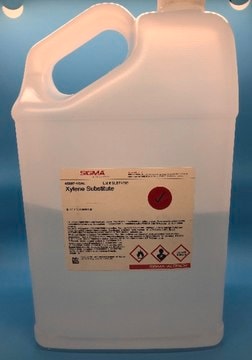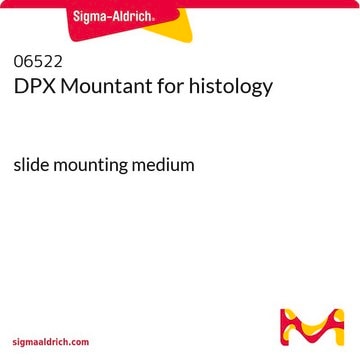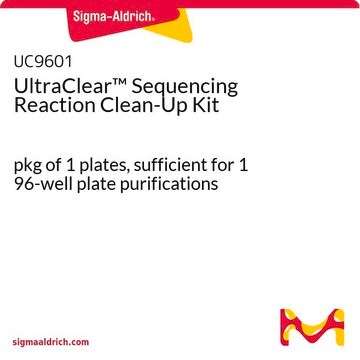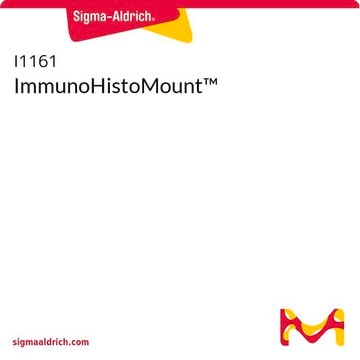H2779
HistoChoice® Clearing Agent
alternative to toluene and xylene
Synonim(y):
dewaxing mixture for paraffin tissue sections
About This Item
Polecane produkty
Postać
liquid
charakterystyka ekologicznej alternatywy
Designing Safer Chemicals
Learn more about the Principles of Green Chemistry.
sustainability
Greener Alternative Product
kolor
colorless
gęstość
0.760-0.820 g/mL
Zastosowanie
hematology
histology
kategoria ekologicznej alternatywy
, Aligned
temp. przechowywania
room temp
Opis ogólny
We are committed to bringing you Greener Alternative Products, which adhere to one or more of The 12 Principles of Greener Chemistry. This product has Inherently Safer Chemistry, compared to the standard use of formalin for tissue processing.
Zastosowanie
- It is suitable as an alternative to toluene and xylene for dewaxing paraffin tissue sections. Prepared slides are suitable for antibody probing applications and in situ hybridizations.
- It has been employed in a study to explain the recalcitrance of lignocellulosic plant cell walls to enzymatic degradation.
- It has been used to develop a novel method to improve sensitivity for the localization of miRNA and their target transcripts in plants.
- It has been used to study the correlation of cytoplasmic ADP-ribosylation levels with markers of patient outcome in human cancers.
Działania biochem./fizjol.
Cechy i korzyści
- Non-toxic, non-carcinogenic, and odorless.
- Non-flammable.
- Preserves native antigenic and nucleic acid sites.
- Compatible with many organic mounting media.
- Dissolves wax faster and evaporates slower than xylene.
- Can be used in automated processors.
- Tissues retain their original structure.
Informacje prawne
Hasło ostrzegawcze
Warning
Zwroty wskazujące rodzaj zagrożenia
Zwroty wskazujące środki ostrożności
Klasyfikacja zagrożeń
Eye Irrit. 2 - Skin Irrit. 2 - STOT SE 3
Organy docelowe
Respiratory system
Kod klasy składowania
10 - Combustible liquids
Klasa zagrożenia wodnego (WGK)
WGK 3
Temperatura zapłonu (°F)
142.0 °F
Temperatura zapłonu (°C)
61.1 °C
Środki ochrony indywidualnej
Eyeshields, Gloves, type ABEK (EN14387) respirator filter
Certyfikaty analizy (CoA)
Poszukaj Certyfikaty analizy (CoA), wpisując numer partii/serii produktów. Numery serii i partii można znaleźć na etykiecie produktu po słowach „seria” lub „partia”.
Masz już ten produkt?
Dokumenty związane z niedawno zakupionymi produktami zostały zamieszczone w Bibliotece dokumentów.
Klienci oglądali również te produkty
Powiązane treści
Three-dimensional (3D) printing of biological tissue is rapidly becoming an integral part of tissue engineering.
Nasz zespół naukowców ma doświadczenie we wszystkich obszarach badań, w tym w naukach przyrodniczych, materiałoznawstwie, syntezie chemicznej, chromatografii, analityce i wielu innych dziedzinach.
Skontaktuj się z zespołem ds. pomocy technicznej














